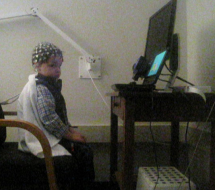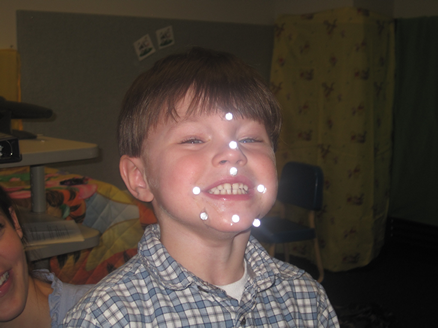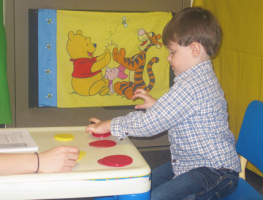Participate in LEARN
We are not accepting participants at this time. Please contact Haskins regarding other studies for young children.
Participation in LEARN
Your toddler would participate in several standardized clinical tests. These include the Preschool Language Scales-5 and the Mullen Scales of Early Learning. These involve asking the child to follow directions, identify pictures, and perform various tasks with age-appropriate toys. Additionally, parents complete questionnaires about the child’s language development, including the MacArthur Communication Development Inventory. We also record the parent, child, and researcher playing together so we can analyze the child’s language skills from that recording. Are there any risks? The risks associated with this are no more than with any speech-language evaluation; the primary risk is frustration (if tasks become challenging for the child).
EEG
 EEG involves wearing cap on the head that records brain activity. Once the cap is on, your child listens to recorded speech and will watch a silent DVD (e.g., Animal Planet, Yo Gabba Gabba) for about 15 minutes. Are there any risks? The only risk is mild skin irritation from the cap, which, if this occurs, typically goes away after a couple of hours.
EEG involves wearing cap on the head that records brain activity. Once the cap is on, your child listens to recorded speech and will watch a silent DVD (e.g., Animal Planet, Yo Gabba Gabba) for about 15 minutes. Are there any risks? The only risk is mild skin irritation from the cap, which, if this occurs, typically goes away after a couple of hours.
Near Infrared Spectroscopy (NIRS)

This procedure involves the child wearing a headband that records brain activity. A light from the headband shines at the brain and records bloodflow. Are there any risks? The intensity of the light is considerably less than the amount of light the brain would receive during an outdoor walk on a sunny day, and is therefore considered to be harmless.
Tracking Mouth Movements During Speech

To assess the speed and consistency of speech movements with the lips and jaw, reflective markers with adhesive are taped to the child’s forehead, jaw, and near the lips. High-powered cameras placed throughout the room then record the movements of the mouth by detecting the reflective markers.
Eye Tracking
 Children look at a computer screen and we track their eye movements as they see pictures and listen to words spoken. This helps us to assess how quickly a child reacts when hearing speech. Are there any risks? The child does not come into contact with any specialized equipment, so these procedures are harmless.
Children look at a computer screen and we track their eye movements as they see pictures and listen to words spoken. This helps us to assess how quickly a child reacts when hearing speech. Are there any risks? The child does not come into contact with any specialized equipment, so these procedures are harmless.

